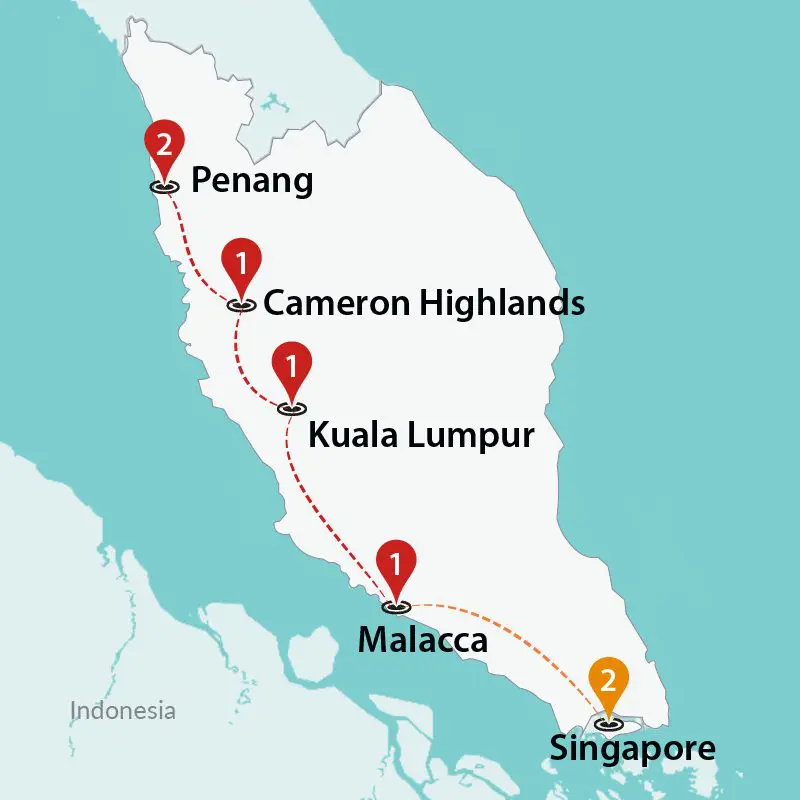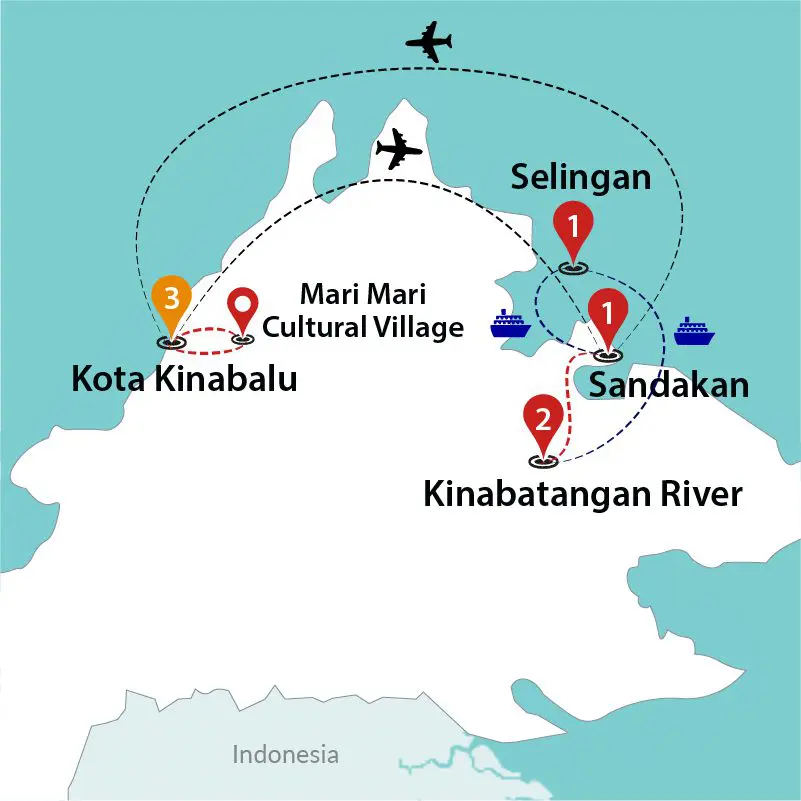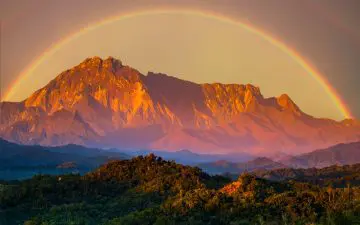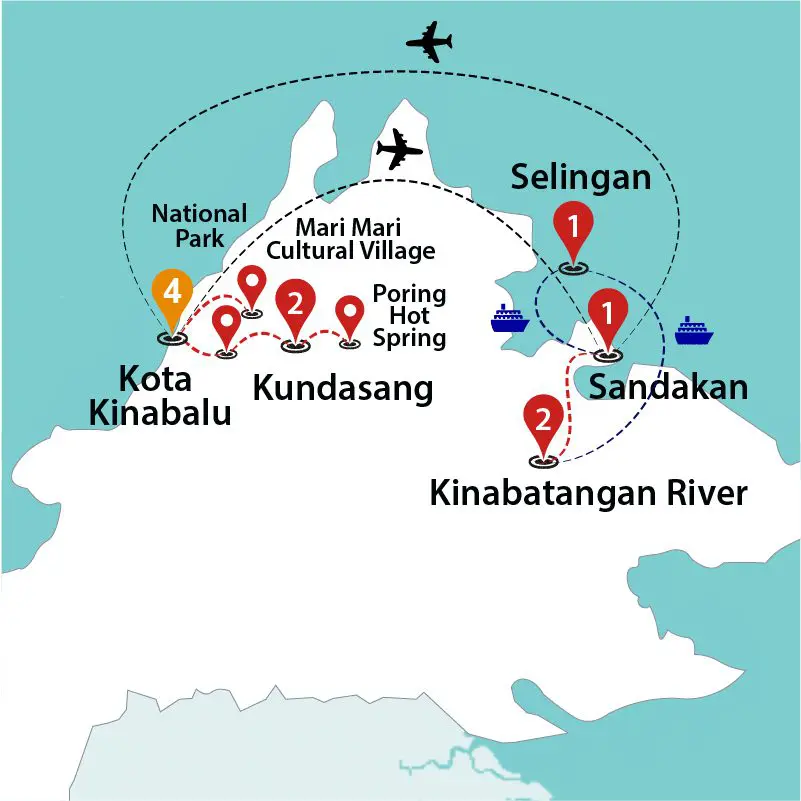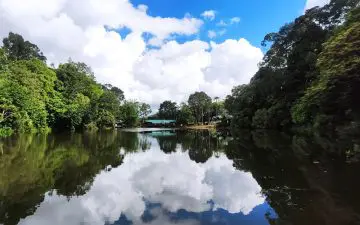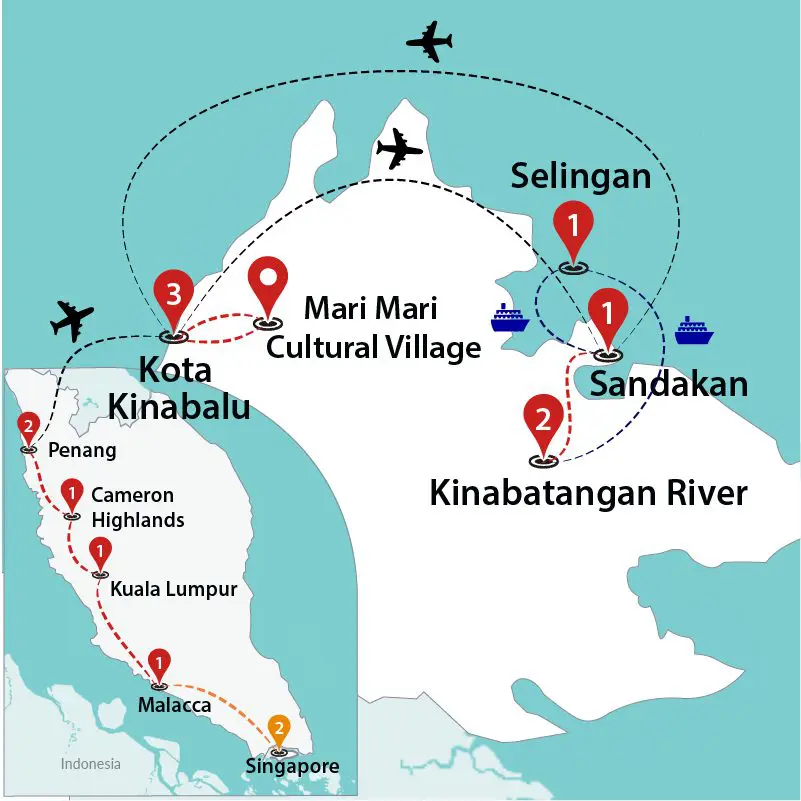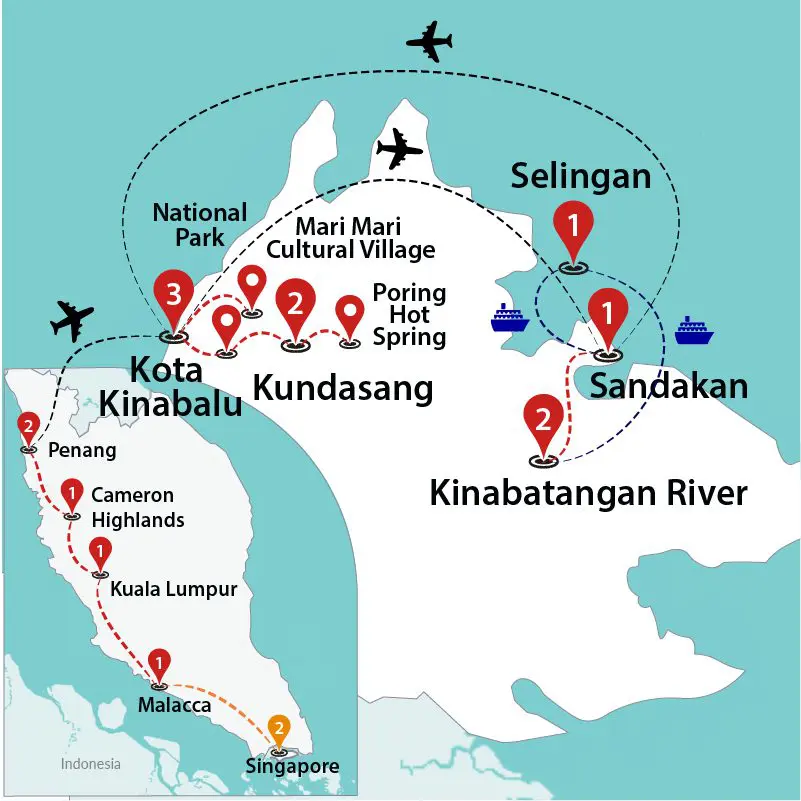Best Time To Visit Malaysia
The best time to visit Malaysia is from May to September when the country enjoys the dry season. During this period, you can bask in abundant sunshine and clear skies, making it an ideal time for outdoor activities, beach vacations, and exploring Malaysia’s stunning coastal regions. Whether you’re lounging on the pristine shores of Langkawi, diving in the crystal-clear waters of Sipadan, or exploring the cultural gems of Penang, the dry season offers the perfect backdrop for an unforgettable Malaysian adventure. Additionally, with relatively lower rainfall, you can expect fewer interruptions to your travel plans, ensuring a smooth and enjoyable experience in this captivating Southeast Asian destination.
If you’re a cultural enthusiast, the intermonsoon period from October to November provides a unique opportunity to immerse yourself in Malaysia’s rich heritage through festivals like Diwali and Hari Raya Haji.
For adventurers seeking the lush, vibrant greenery of the rainforests, the wet season from November to February showcases Malaysia’s jungles at their most captivating.
Why You Should Visit Malaysia: Consider visiting Malaysia for its rich cultural diversity, stunning landscapes ranging from rainforests to beaches, delicious cuisine, historical treasures, vibrant cities, diverse wildlife, adventure activities, and warm hospitality. With budget-friendly options and a favorable climate year-round, Malaysia beckons travelers with a mix of cultural immersion, natural beauty, and exciting experiences for every taste and budget.
Things to Consider: When visiting Malaysia, keep several factors in mind for a smooth and enjoyable trip. Respect local customs and dress modestly, particularly in religious sites. Be mindful of the diverse cultural practices and festivals. Malaysia is a tropical country, so pack lightweight clothing, sunscreen, and mosquito repellent. Ensure your travel documents are up-to-date, and be aware of any visa requirements. Stay hydrated, try the local cuisine, and be prepared for occasional rain, especially during the wet season.
Monthly Travel Guide For Malaysia
Travelling in Malaysia in March and April
In Malaysia, March and April mark the transition from the northeast monsoon season to the intermonsoon period, resulting in changing weather patterns across the country. March and April are generally considered drier and more pleasant months on the west coast. The east coast of Peninsular Malaysia also experiences improving weather during these months.
In Borneo, including regions like Sabah and Sarawak, March and April are relatively dry and comfortable months. This period is excellent for exploring rainforests, wildlife, and engaging in outdoor adventures.

Malaysia Climate & Weather Guide
| Region | Jan | Feb | Mar | Apr | May | Jun | Jul | Aug | Sep | Oct | Nov | Dec |
|---|---|---|---|---|---|---|---|---|---|---|---|---|
| Colombo | 30°C | 30°C | 31°C | 31°C | 30°C | 30°C | 29°C | 29°C | 29°C | 29°C | 29°C | 30°C |
| Anuradhapura | 29°C | 31°C | 33°C | 34°C | 33°C | 34°C | 33°C | 33°C | 33°C | 32°C | 30°C | 29°C |
| Sigiriya | 29°C | 31°C | 34°C | 35°C | 34°C | 34°C | 34°C | 34°C | 34°C | 33°C | 31°C | 29°C |
| Kandy | 28°C | 30°C | 31°C | 31°C | 30°C | 29°C | 29°C | 29°C | 30°C | 30°C | 28°C | 28°C |
| Nuwara Eliya | 25°C | 26°C | 28°C | 28°C | 27°C | 27°C | 27°C | 27°C | 27°C | 26°C | 25°C | 25°C |
| Polonnaruwa | 29°C | 31°C | 34°C | 35°C | 34°C | 34°C | 34°C | 34°C | 34°C | 33°C | 31°C | 29°C |
| Dambulla | 29°C | 31°C | 34°C | 35°C | 34°C | 34°C | 34°C | 34°C | 34°C | 33°C | 31°C | 29°C |
When to visit Malaysia
Discover Malaysia’s Sunshine Bliss from May to September
Visiting Malaysia from May to September is a delightful experience for any traveler. During these months, the country basks in sunny skies and pleasant temperatures, making it the perfect time for outdoor adventures and beach getaways. Whether you’re exploring the bustling streets of Kuala Lumpur, immersing yourself in the cultural tapestry of Penang, or relaxing on the pristine shores of Borneo, Malaysia offers a diverse range of experiences to suit every taste.
With minimal rainfall, you can relish clear waters for diving and snorkeling, lush rainforests for trekking, and vibrant festivals that showcase Malaysia’s rich heritage. Plus, the budget-friendly options and warm hospitality make this period an ideal window to explore Malaysia’s natural beauty and cultural wonders. Our Incredible Borneo & Malaysia tour is the perfect opportunity to experience the brightest side of Malaysia.
Tips for visiting Malaysia from May to September:
– While it’s generally the dry season, Malaysia’s weather can be unpredictable. Keep an eye on local forecasts and regional variations, especially if you plan outdoor activities.
– The warm weather and humidity can be dehydrating, so carry a reusable water bottle and drink plenty of fluids throughout the day.
– Malaysia hosts various cultural festivals during these months, such as Hari Raya Aidilfitri and Wesak Day. Don’t miss the chance to experience these celebrations
– Malaysian street food is famous for its delicious flavors. Don’t miss the opportunity to savor local dishes at street stalls and night markets.
– If you’re exploring Malaysia’s natural habitats, follow ethical wildlife-watching guidelines.
– Keep abreast of any travel advisories or health-related updates.
Trips to Malaysia in the Monsoon Season
Malaysia’s monsoon season, which typically spans from November to February, offers travelers a unique and enchanting experience. During this period, the country undergoes a transformation, revealing its hidden treasures and natural beauty in a whole new light. While it’s true that the monsoon season brings frequent rainfall, it also breathes life into Malaysia’s landscapes, turning them into lush, emerald wonderlands.
One of the most captivating aspects of visiting Malaysia during this time is the rainforest. As the rains descend, the forests come alive with a symphony of wildlife and the glistening spectacle of numerous waterfalls. Jungle treks become an even more exhilarating adventure as you explore pristine nature trails, discover hidden streams, and spot an array of fascinating flora and fauna. It’s the perfect season to unleash your inner nature enthusiast and capture the breathtaking beauty of this biodiverse paradise.
Tips for visiting Malaysia October to December:
– Bring lightweight and breathable clothing, as Malaysia’s climate remains relatively warm and humid.
– Take advantage of the festive season in Malaysia. Celebrations like Diwali (Festival of Lights) and Christmas are marked by vibrant displays.
– The cooler weather makes outdoor activities more enjoyable. Consider hiking in the Cameron Highlands, exploring national parks, and visiting waterfalls and tea plantations.
Best things to do in Malaysia:
– Visit Historical Sites: Explore Malaysia’s rich history by visiting historical sites like George Town in Penang, where you can stroll through well-preserved colonial architecture.
– Experience Nature: The cooler weather makes outdoor activities a delight. Hike in the Cameron Highlands, where you can explore lush tea plantations, visit the Mossy Forest, and enjoy the stunning views.
– Culinary Adventures: Malaysia is a food lover’s paradise, and trying the local cuisine is a must. Savor street food in bustling markets, indulge in Nasi Lemak (a traditional Malay dish), and sample the diverse flavors of Malaysian food, influenced by Chinese, Indian, and Malay cultures.
Malaysia FAQ
When is the best time to visit Malaysia for good weather?
The best time to visit Malaysia for good weather is from May to September. During these months, Malaysia experiences its dry season, characterized by relatively low rainfall and pleasant temperatures. This period offers travelers a fantastic opportunity to enjoy outdoor activities, explore the country’s natural beauty, and indulge in various adventures.
What is Malaysia’s peak tourist season, and when should I avoid the crowds?
Malaysia’s peak tourist season typically occurs from December to February, coinciding with the cooler and drier months. During this period, the country attracts a higher number of tourists, and popular destinations and attractions can become crowded.
To avoid the crowds and potentially higher prices for accommodations and tours, it’s advisable to plan your visit during the shoulder seasons, which are from March to April and October to November.
Which parts of Malaysia are ideal for beach vacations, and when is the best time for them?
The best time to visit Sri Lanka for wildlife viewing is during the dry season, which is generally from December to March. During this time, the vegetation is less dense, making it easier to spot animals in the national parks and reserves in Sri Lanka. The dry season is when animals tend to congregate around water sources, providing excellent opportunities for wildlife viewing.
Are there specific cultural festivals or events in Malaysia that I should plan my visit around?
Malaysia hosts a wide array of cultural festivals and events throughout the year. Key celebrations include Chinese New Year, Thaipusam, Hari Raya Aidilfitri, Gawai Festival, Hari Raya Haji, Mid-Autumn Festival, Deepavali, Christmas, and New Year’s Eve.
These festivities provide an opportunity to immerse yourself in Malaysia’s rich cultural tapestry, offering vibrant processions, unique rituals, delicious traditional dishes, and a deeper understanding of the country’s diverse communities.
Is it advisable to visit Malaysia during the monsoon season, and if so, what can I expect?
Visiting Malaysia during the monsoon season, which typically spans from November to February, presents a mixed bag of advantages and disadvantages. On the positive side, you’ll encounter fewer crowds and lower prices for accommodations and tours, making it a budget-friendly option.
The lush landscapes, rejuvenated by heavy rainfall, offer excellent opportunities for nature enthusiasts to explore the rainforests and spot wildlife. However, expect frequent and heavy rain, especially on the west coast and some inland regions, potentially disrupting outdoor activities and water sports.
What should I pack for a trip to Malaysia during different seasons?
What you should pack for a trip to Malaysia varies by season. For the dry season (May to September), pack lightweight and breathable clothing, swimwear, comfortable walking shoes, sun protection, and insect repellent. During the monsoon season (November to February), include rain gear, waterproof shoes, and an umbrella.
The cooler season (October to March) in regions like the Cameron Highlands warrants warmer clothing and layers. Always bring essential travel documents, like passports and visas, and adapt your packing list based on your specific destination and planned activities.
How many days do you need to visit Malaysia?
The ideal duration for a trip to Malaysia can vary widely depending on your interests and the places you wish to visit. A well-rounded visit to major destinations like Kuala Lumpur, Penang, and Langkawi can be accomplished in around 7 to 10 days. However, if you want to explore Borneo’s wildlife, the Cameron Highlands, or immerse yourself in local culture and festivals, consider extending your stay to two weeks or more. Ultimately, the number of days needed depends on your travel preferences and the depth of your exploration in this diverse and vibrant country.
What is the coldest month in Malaysia?
Malaysia generally experiences a warm and humid tropical climate throughout the year, so there isn’t a true “cold” month. However, the cooler months tend to occur from November to February, with January being one of the coolest months, especially in regions like the Cameron Highlands and Genting Highlands, where temperatures can drop to around 10-20°C (50-68°F) at higher elevations. In contrast, lowland areas and coastal regions remain relatively warm, with temperatures averaging 25-30°C (77-86°F) during this period.
What are the best cities to visit in Malaysia?
Malaysia boasts several vibrant cities, each offering its unique charm and attractions. Kuala Lumpur, the capital, is known for its iconic Petronas Twin Towers and diverse culinary scene. Penang‘s George Town is a UNESCO World Heritage site filled with historic architecture and delectable street food.
Malacca boasts a rich historical heritage, while Ipoh is celebrated for its culinary delights. Kota Kinabalu serves as a gateway to Borneo’s natural wonders, and Kuching, in Sarawak, is a hub for cultural experiences and wildlife adventures.
Is it safe to travel to Malaysia?
Malaysia is generally considered a safe travel destination. It has a stable political environment and low crime rates compared to many other countries. However, like any other place, it’s essential to exercise basic precautions, such as safeguarding your belongings, avoiding poorly lit areas at night, and following local guidelines and customs. Additionally, stay informed about any travel advisories or health-related updates that may be relevant to your trip, especially in light of global events. Overall, Malaysia is known for its warm hospitality and is a welcoming and safe country for travelers.
What are the most beautiful places in Malaysia?
Malaysia boasts an array of stunning destinations, including the pristine beaches of Langkawi, the enchanting tea plantations of the Cameron Highlands, and the biodiverse rainforests of Taman Negara National Park. The cultural splendor of George Town in Penang, the historic charm of Malacca’s old town, and the tranquil beauty of the Perhentian Islands are also among the country’s most beautiful places.
Borneo‘s natural wonders, such as the Kinabalu National Park and the wildlife-rich Danum Valley, add to Malaysia’s allure. These destinations showcase Malaysia’s diverse landscapes, culture, and natural beauty, making it a treasure trove for travelers seeking breathtaking experiences.
Does Malaysia have nightlife?
Yes, Malaysia has a vibrant nightlife scene, particularly in major cities like Kuala Lumpur, Penang, and Johor Bahru. You’ll find a variety of entertainment options, from trendy bars, nightclubs, and live music venues to bustling night markets and street food stalls that come alive after dark. Kuala Lumpur’s Bukit Bintang and Changkat Bukit Bintang areas are known for their nightlife districts, while Penang’s George Town offers a mix of trendy bars and cultural performances.
Which airlines fly directly into Malaysia?
Several airlines offer direct flights to Malaysia, primarily landing at Kuala Lumpur International Airport (KLIA) and KLIA2. Some of the major airlines that operate direct flights to Malaysia include Malaysia Airlines, AirAsia, Singapore Airlines, Emirates, Cathay Pacific, Qatar Airways, and Thai Airways, among others.
What is Malaysia famous for?
Malaysia is famous for its diverse cultural heritage, stunning natural landscapes, and culinary delights. It’s renowned for its iconic Petronas Twin Towers in Kuala Lumpur, a symbol of modern architecture. Malaysia’s lush rainforests, pristine beaches, and biodiversity, particularly in Borneo, make it a haven for nature lovers and wildlife enthusiasts. The country’s rich cultural tapestry is celebrated through festivals like Diwali, Chinese New Year, and Hari Raya Aidilfitri. Malaysia is also famous for its mouthwatering street food, including dishes like Nasi Lemak, Roti Canai, and Char Kway Teow, which are beloved by locals and visitors alike.
What is the best time to eat delicious food in Malaysia?
The best time to indulge in delicious food in Malaysia is year-round! Malaysia’s culinary scene is vibrant and diverse, offering delectable dishes at all times. However, if you want to experience traditional festivals and street food in its full glory, consider planning your visit around major celebrations like Chinese New Year, Ramadan (for Buka Puasa or breaking fast meals), Diwali, and Christmas.
During these festivities, you can savor special dishes and witness the country’s rich culinary traditions in a festive atmosphere. Additionally, Malaysia’s night markets, known as “pasar malam,” come alive in the evenings, offering an abundance of street food and local treats that are best enjoyed after sunset.
Malaysia by Season

Winter
Malaysia, a tropical wonderland, beckons travelers with its diverse array of attractions and experiences, creating an enchanting destination for those in search of a unique winter escape.
Whether you’re exploring the ancient wonders of Georgetown’s historic streets or savoring a bowl of flavorful laksa in the vibrant heart of Kuala Lumpur, Malaysia promises an unforgettable adventure.
Best Things to do in Malaysia in winter:
Visit places like Penang, Cameron Highlands, and immerse yourself in the lively festivities of Diwali, Christmas, and Chinese New Year.

Spring
During spring in Malaysia, you’ll find warm and sunny weather that’s perfect for exploring the country’s diverse attractions. Whether you’re hiking in the lush tea plantations or indulging in thrilling water sports along the azure coastlines, there’s something for every traveler in this tropical paradise.
It’s also an excellent time to visit Malaysia’s wildlife reserves, such as Taman Negara and Borneo’s rainforests, as the mild weather allows for optimal wildlife spotting opportunities. You can have the chance to encounter unique creatures like orangutans, proboscis monkeys, and exotic bird species in their natural habitats.
Best Things to do in Malaysia in spring:
Visit historical gems such as the UNESCO-listed George Town in Penang and the Malacca Straits Mosque to appreciate Malaysia’s rich heritage.

Summer
Malaysia is renowned for its lush tea plantations, and summer presents an excellent opportunity to explore the country’s picturesque highlands. The cool, misty climate of destinations like the Cameron Highlands and Genting Highlands offers a refreshing escape from the coastal heat and humidity.
Additionally, during the summer months, Malaysia’s national parks and wildlife reserves are open and accessible, making it an ideal time to encounter the country’s diverse wildlife, including orangutans, pygmy elephants, and a variety of bird species.
Best Things to do in Malaysia in summer:
Take guided tours of tea estates in the Cameron Highlands and learn about tea production while enjoying scenic vistas. Discover historical sites such as Melaka (Malacca), Georgetown in Penang, and Batu Caves near Kuala Lumpur.
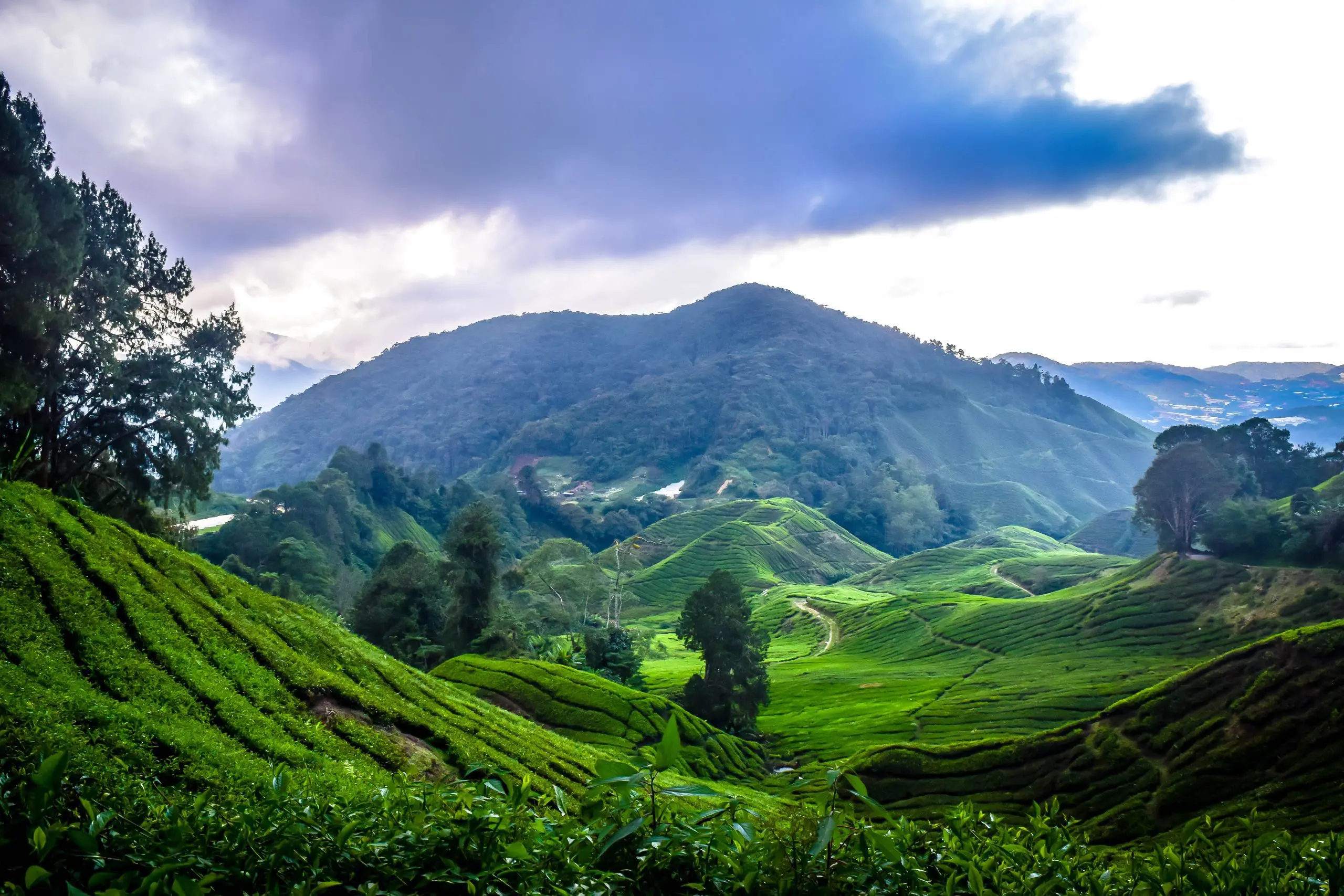
Autumn
In Malaysia, the fall season brings about picturesque landscapes with lush greenery and vibrant flora. This period provides an excellent opportunity to explore the country’s stunning countryside, including its enchanting tea plantations, cascading waterfalls, and diverse national parks.
Best Things to do in Malaysia in autumn:
Chase waterfalls like Lata Iskandar and Chiling Waterfall. Enjoy the cool climate and serene ambiance of highland retreats like the Cameron Highlands.
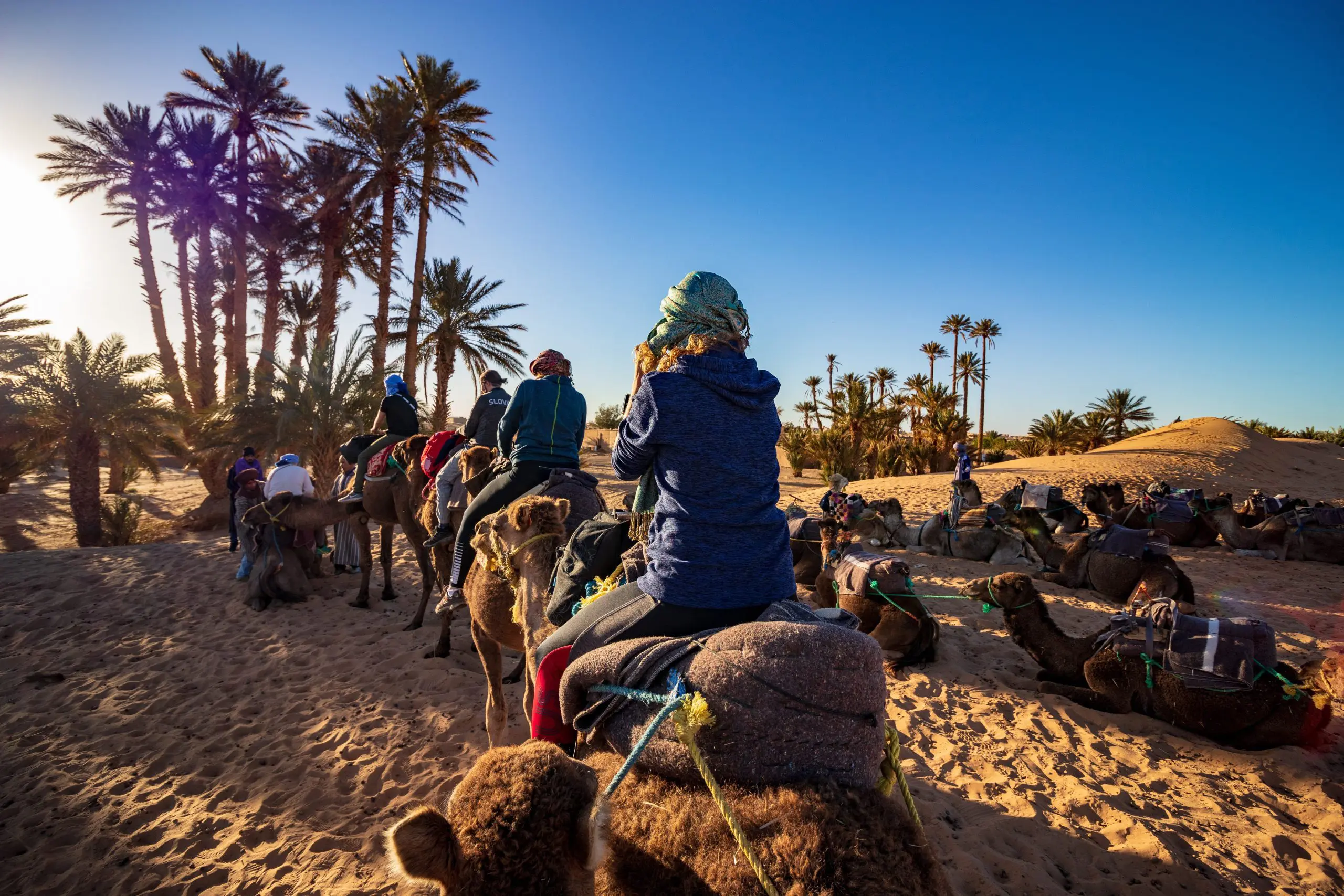 March Sale; 2 For 1
March Sale; 2 For 1  Croatia Sailing : 2 For 1
Croatia Sailing : 2 For 1 Asia Tours : 2 For 1
Asia Tours : 2 For 1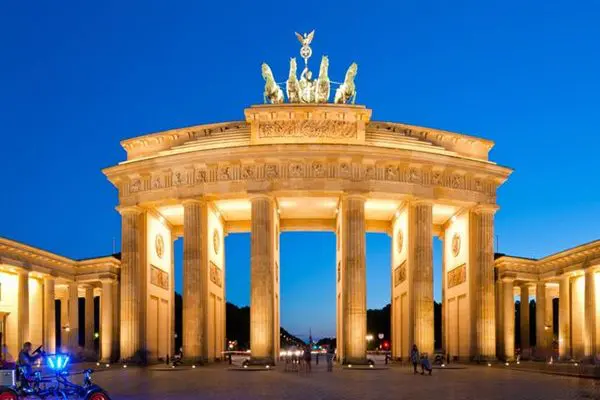 Central & Eastern Europe Tours: 2 For 1
Central & Eastern Europe Tours: 2 For 1  Why Travel Talk
Why Travel Talk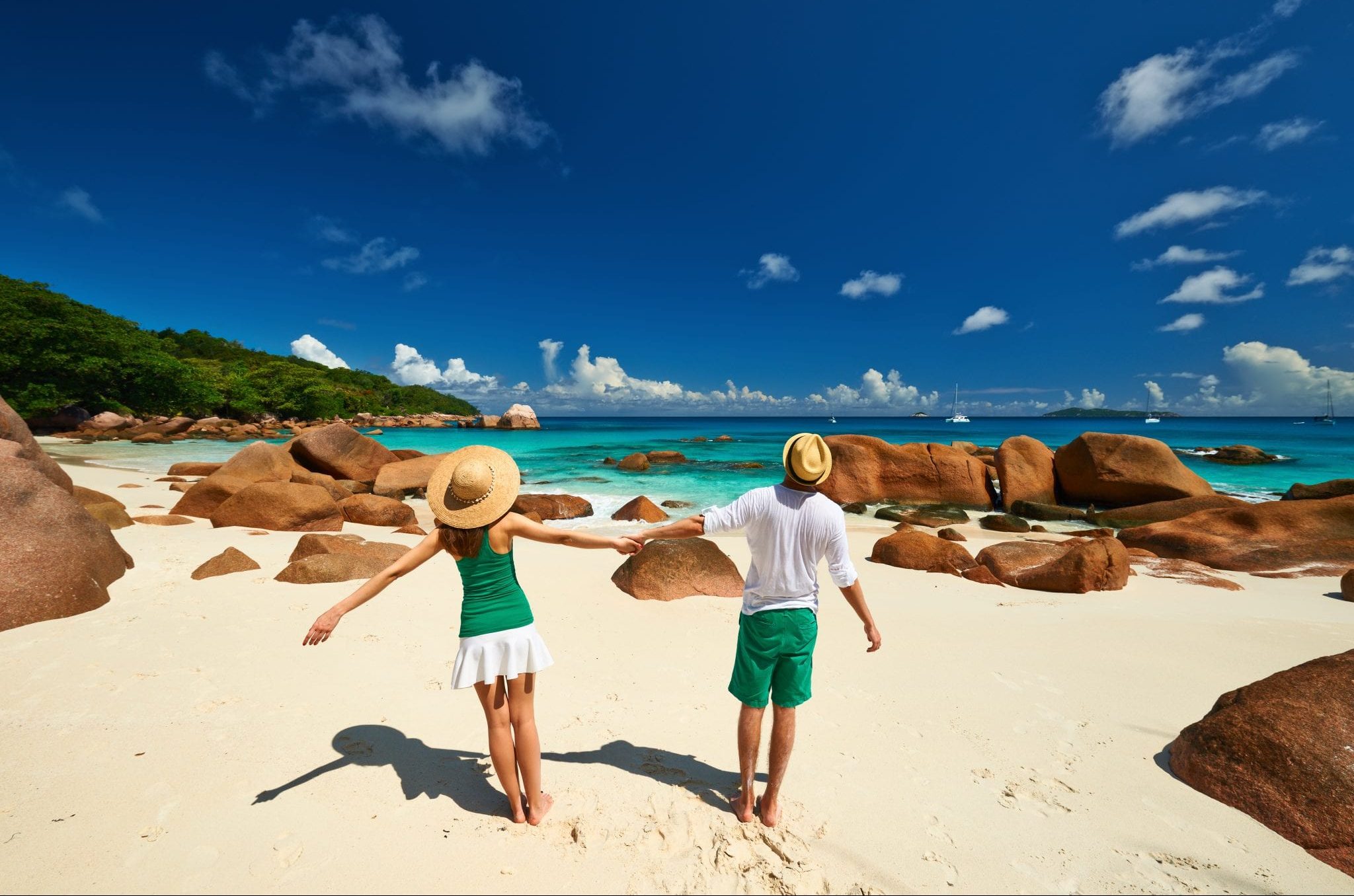 Travel Talk Blog
Travel Talk Blog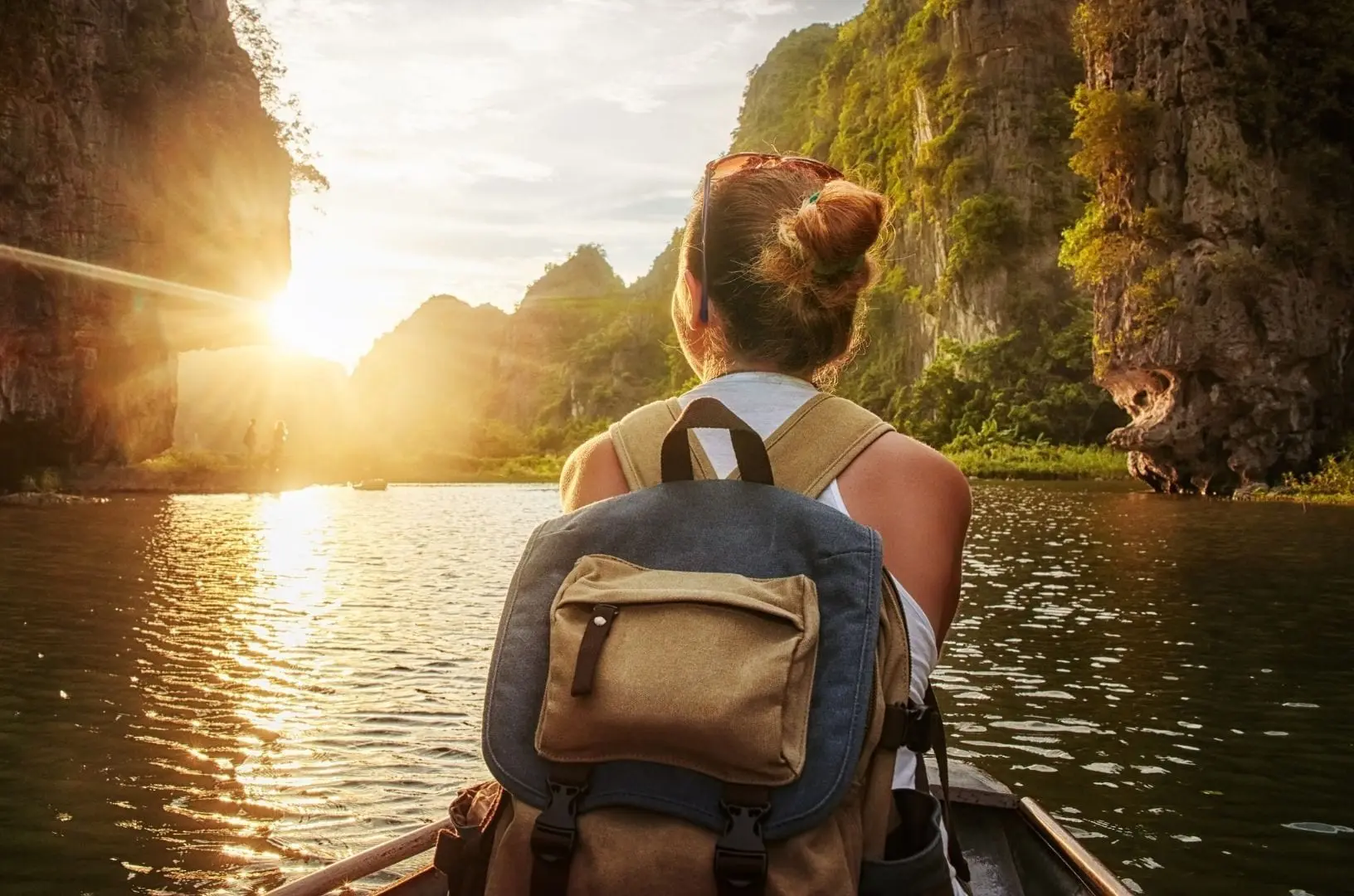 Responsible Travel
Responsible Travel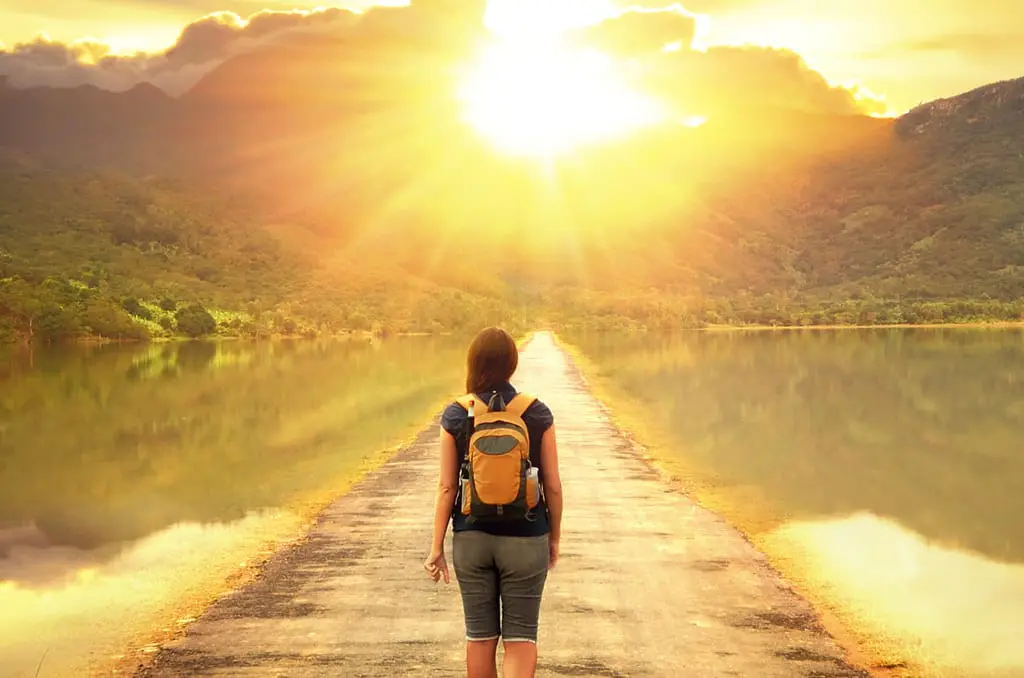 Fair Travels with Travel Talk
Fair Travels with Travel Talk





